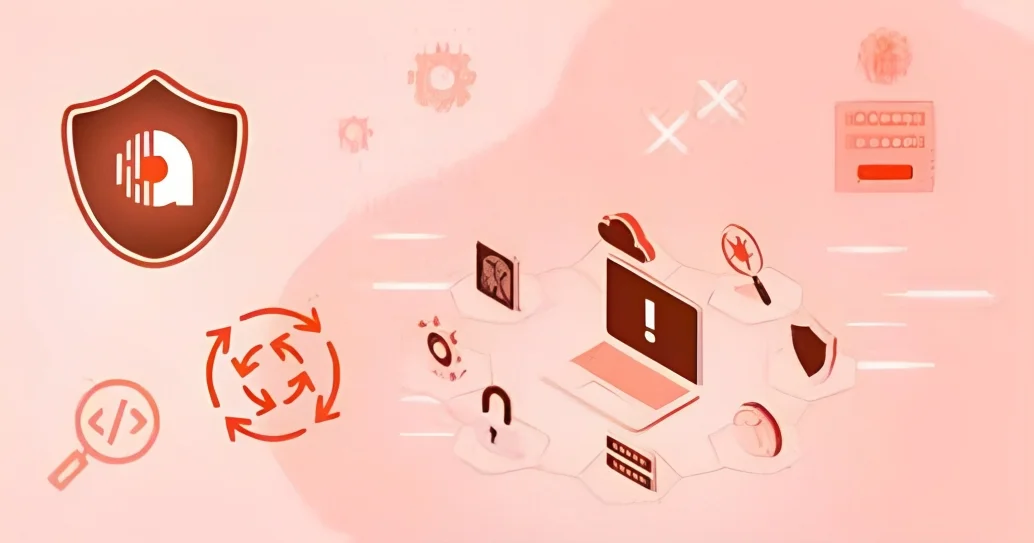The Best Practises for Web and App Security and Privacy
It is essential to safeguard the security and privacy of online and app users since technology continues to grow quickly and plays a bigger role in our lives. Sensitive data may be exposed to bad actors due to the increase in cyber threats. To protect their information and keep customers’ confidence, businesses and people must implement the best practices for online and app security and privacy.

Introduction to Web and App Security
The entire cybersecurity strategy of an organization must include both web and app security. These protocols are planned to defend digital support such as websites and applications from hacker attacks, unauthorized attacks, and data breaches. In addition to protecting user data, a secure online and app environment also protects the reputation of the company or person in charge of these digital platforms.
Importance of Web and App Security
The following factors make ensuring the security of websites and applications crucial.
Data Protection
Web and app security measures shield sensitive user data, such as private information, financial information, and proprietary company data, from unauthorized access.
Preventing Cyberattacks
Strong security procedures are crucial to thwart possible assaults given the development of cyber dangers including ransomware, phishing, and DDoS attacks.
Maintaining Trust
Customers are more likely to remain loyal and engaged with websites and applications that prioritize their security and privacy.
Compliance and Legal Obligations
According to several industry-specific requirements, such as GDPR or HIPAA, businesses must put in place sufficient security safeguards to secure user data.
Best Practises for Web and App Security
Conduct Regular Security Audits
Performing regular security audits is the foundation of a strong web and app security strategy. These audits involve comprehensive assessments of all digital assets, identifying potential vulnerabilities, and ensuring compliance with security standards.
Implement Strong Authentication Mechanisms
Before providing people access to sensitive data, the process of authentication involves confirming their identity. Assuming multi-factor authentication (MFA) decreases the threat of unauthorized access if passwords are swiped, MFA is an efficient solution to add a layer of protection.
Keep Software and Systems Updated
Outdated software and systems are susceptible to known vulnerabilities. Regularly updating web and app components, including plugins, frameworks, and operating systems, is crucial to patching potential security flaws.
Encrypt Data Transmission
Before being traded between users and the server, data should be encrypted using enterprise-standard encryption techniques like SSL and TLS. This makes sure that the data is illegible to unauthorized people even if it is intercepted.
Secure Coding Practises
Adopting secure coding practices during the development phase of web and app projects is essential. Training developers to avoid common coding mistakes and vulnerabilities can significantly reduce the risk of potential exploits.
Monitor and Respond to Security Incidents
Implementing robust monitoring tools helps detect any unusual activities or potential security breaches. Having a well-defined incident response plan allows for quick and efficient actions to mitigate any security threats.
Protecting User Privacy
Privacy Policy and Consent
For consumers to understand how their data is gathered, utilized, and kept, a clear and thorough privacy policy must be maintained. Obtaining explicit consent from users before collecting any personal information is a fundamental aspect of privacy protection.
Data Minimization
Collecting only the necessary user data and avoiding excessive data storage can minimize the impact of a potential data breach. Reducing data exposure lessens the risk of compromising sensitive information.
Anonymization and Pseudonymization
Wherever possible, data should be anonymized or pseudonymized to protect user identities while still allowing for analysis and usability. This way, even if data is exposed, it cannot be directly linked to specific individuals.
Regular Privacy Impact Assessments
Conducting regular privacy impact assessments helps identify and address any potential privacy risks associated with web and app operations. This proactive approach ensures that privacy concerns are continuously monitored and mitigated.
Educating Users on Security Awareness
While implementing robust security measures is essential, educating users about security awareness is equally crucial. Using weak passwords or falling for phishing schemes are just two examples of how human error contributes to many security breaches. Providing users with resources and tips on identifying potential threats can significantly enhance overall security.
Regular Training for Employees
For businesses, ensuring that employees receive regular security training is vital. Employees should be educated about the latest cybersecurity threats, best practices for password management, and the importance of reporting any suspicious activities promptly.
Secure Network Infrastructure
Securing the network infrastructure is a fundamental aspect of web and app security. The forbidden approach can be evaded with the help of a firewall, an infiltration identification procedure, and an intrusion deterrence system.
Mobile App Security
With the increasing use of mobile devices, securing mobile apps has become crucial. Developers should follow security guidelines, such as the OWASP Mobile Application Security Verification Standard (MASVS), to protect against common mobile app vulnerabilities.
Regular Backups and Data Recovery
Regularly backing up data and having a robust data recovery plan in place can mitigate the impact of data breaches and system failures. Data backups should be stored securely and tested for restoration regularly.
Balancing Security and User Experience
User-Friendly Security Measures
While stringent security measures are essential, they should not impede the user experience. It’s critical to strike a balance between security and user comfort to prevent consumers from feeling overburdened or dissatisfied by excessive security precautions.
Continuous Improvement and Adaptation
The landscape of cybersecurity is constantly evolving, and new threats emerge regularly. Implementing a culture of continuous improvement and adaptation allows organizations to stay ahead of potential threats and enhance their security posture.
The Future of Web and App Security
Embracing Emerging Technologies
As technology evolves, new opportunities and challenges arise. Embracing emerging technologies such as artificial intelligence and blockchain can enhance security measures and provide innovative solutions to protect web and app environments.
Collaboration and Information Sharing
The fight against cyber threats requires collective efforts. Encouraging collaboration and information sharing among organizations, security researchers, and government entities can lead to faster threat identification and mitigation.
Privacy by Design
Moving forward, adopting a “privacy by design” approach in web and app development ensures that privacy and security considerations are integrated into the very foundation of digital products. By prioritizing user privacy from the start, this strategy reduces the chance of privacy violations.
Regulatory Compliance
Complying with relevant regulations and standards is crucial for organizations to maintain the highest level of web and app security and privacy. There could be particular data protection regulations and compliance standards that must be followed, depending on the sector and region.
Payment Card Industry Data Security Standard (PCI DSS)
For businesses processing credit card payments, adhering to PCI DSS is essential. This standard ensures the secure handling of cardholder data to prevent fraud and data breaches in payment card transactions.
Protecting Against Common Web and App Vulnerabilities
Cross-Site Scripting (XSS)
XSS is a common web vulnerability where attackers inject malicious scripts into web pages viewed by other users. Implementing input validation and output encoding can mitigate the risk of XSS attacks.
SQL Injection (SQLi)
SQLi occurs when attackers insert malicious SQL code into web application input fields, potentially gaining unauthorized access to databases. SQL injection attacks may be averted with the use of prepared statements and parameterized queries.
Secure Development Lifecycle (SDLC)
To create safe online and mobile apps from the bottom up, a secure development lifecycle must be used.
Requirements and Design
During the requirements and design phases, security considerations should be integrated into the project’s foundation. Identifying potential security risks and establishing security controls are crucial at this stage.
Implementation
The implementation phase involves coding the application while adhering to secure coding practices and guidelines. Code reviews and testing play a significant role in identifying and addressing vulnerabilities during this phase.
Testing
A thorough testing process that includes penetration testing, vulnerability scanning, and security assessments makes the application resistant to potential assaults.
Deployment and Maintenance
During deployment, security measures should be applied to the production environment. Additionally, continuous monitoring and regular updates are crucial to addressing new threats and vulnerabilities that may emerge over time.
Data Privacy and Consent Management
Transparent Data Collection
Associations should be evident and genuine regarding the data they assemble from clients and how they operate. Communicating this information in a privacy policy builds trust with users.
Opt-In Consent
Obtaining explicit opt-in consent from users before collecting and processing their data is a best practice to ensure compliance with privacy regulations.
Data Retention Policies
Defining data retention policies helps organizations retain data only for as long as necessary and delete it securely when no longer needed, reducing the risk of data breaches.
Conclusion
In conclusion, safeguarding web and app security and privacy is an ongoing process that demands constant vigilance and adherence to best practices. By conducting regular security audits, implementing strong authentication mechanisms, keeping software updated, and adopting secure coding practices, organizations can fortify their digital assets against potential threats.
Additionally, prioritizing user privacy through clear privacy policies, data minimization, and anonymization builds trust and fosters a positive user experience. Companies and individuals may provide their customers with a secure and private online experience by following these best practices, promoting a more secure digital environment for everyone. Remember, proactive measures are key to ensuring the confidentiality, integrity, and availability of web and app data in today’s ever-evolving technological landscape.


